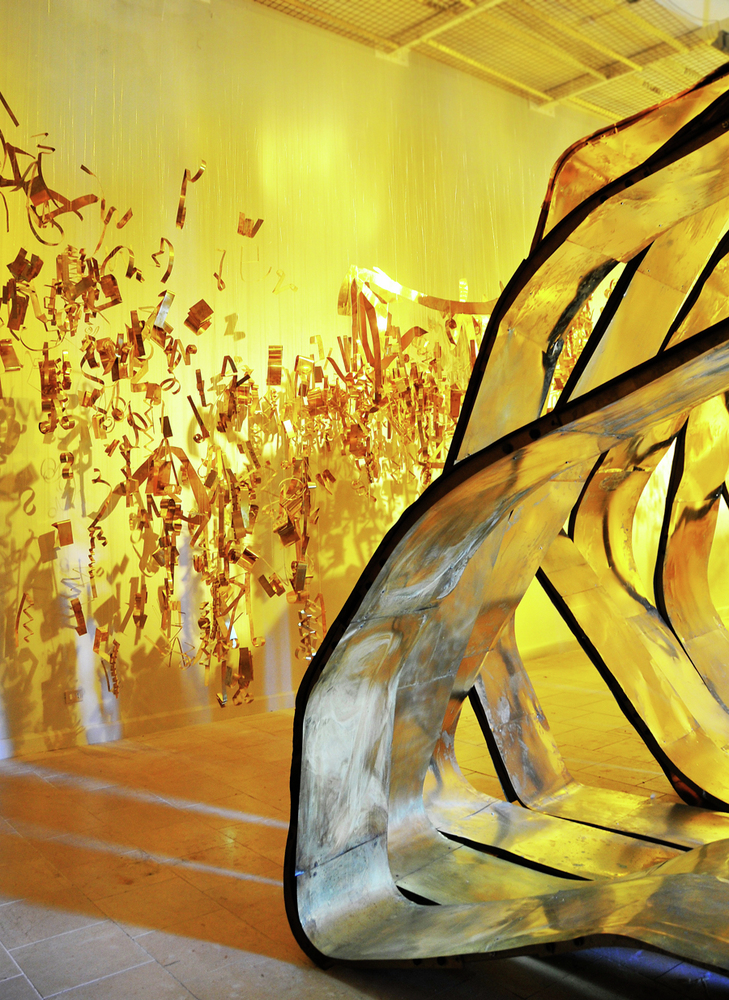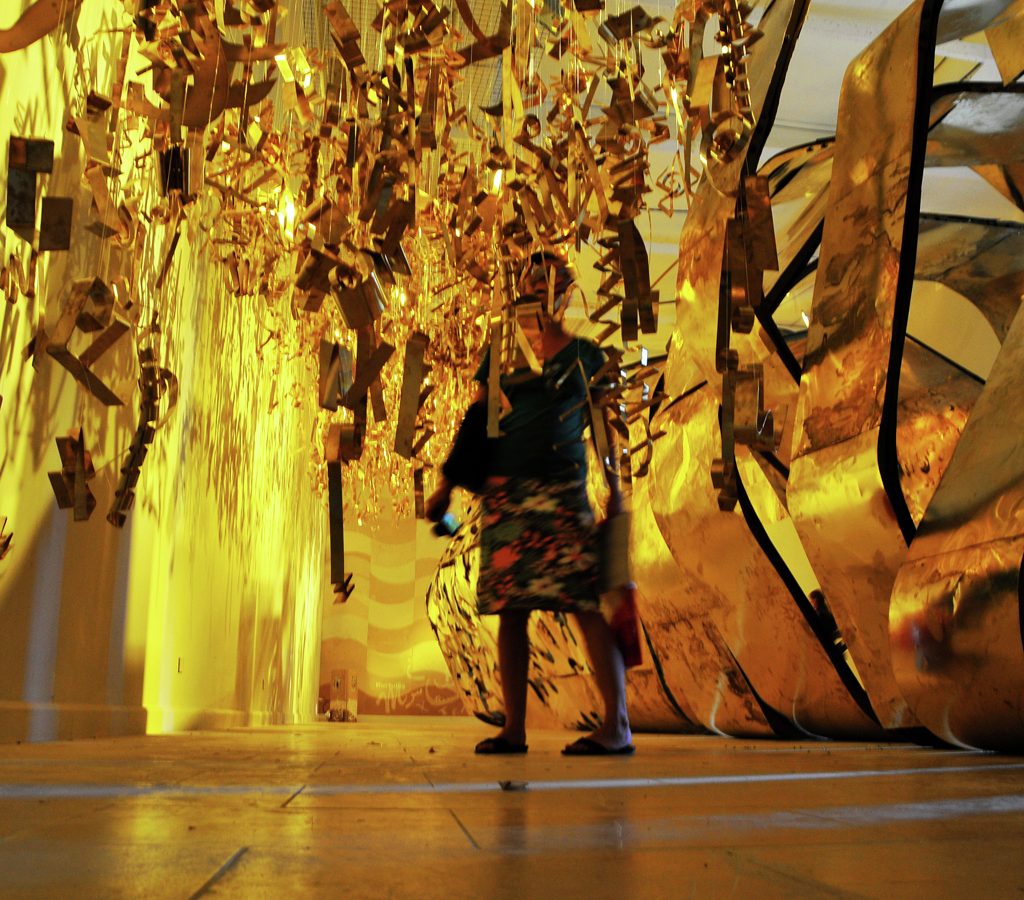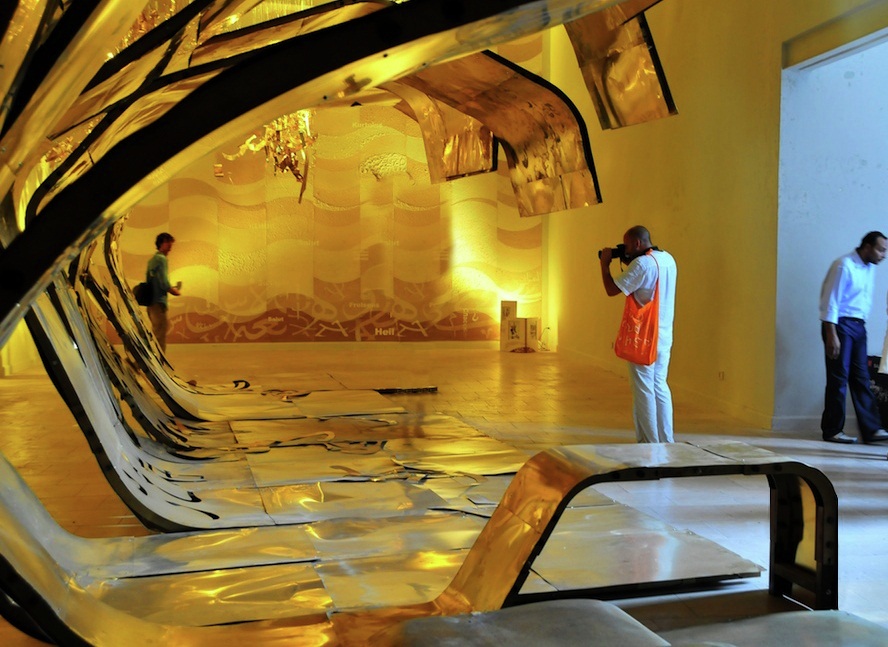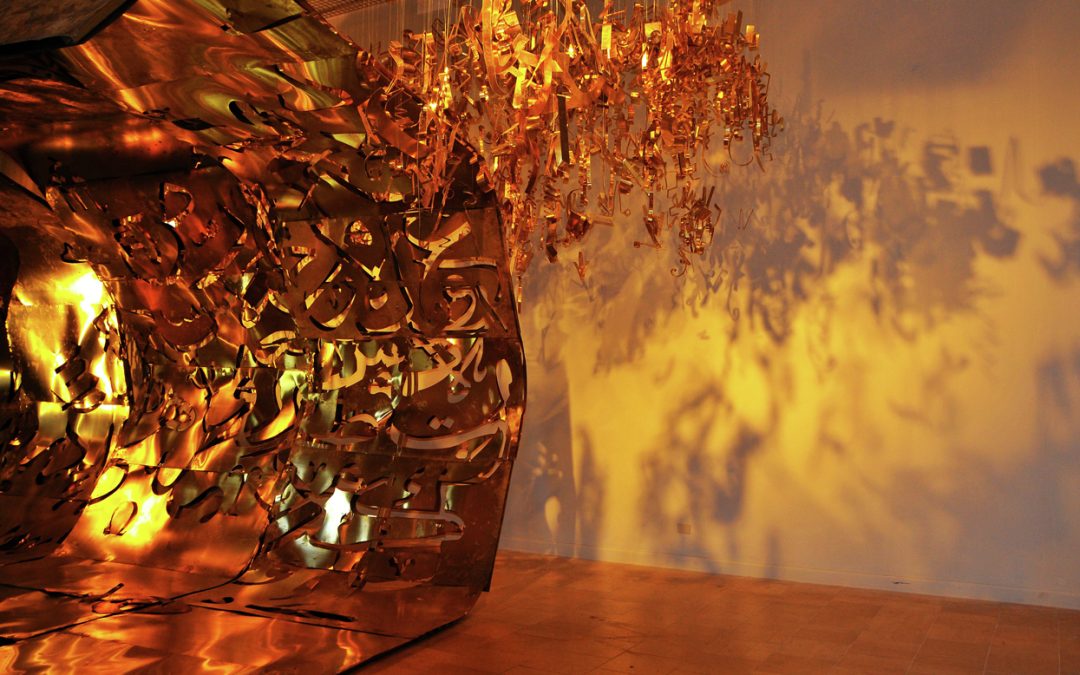Architects Ahmed Mito, Kamel Lokman, and Hisham Alaa and artists Ayman Lotfy, Ahmed Refat, Niveen Farghaly, and Amer Abdelhakem recently had the honor of presenting their work for the Egyptian Pavilion at the prestigious La Biennale di Venezia. Their project, examining the relationship between architecture and humanity, presented a unique and thought-provoking view of the role that architecture plays in the lives of people.
The concept that these artists and architects presented in their project was a poignant examination of the connection between architecture and people. It highlighted the idea that the struggles and conflicts of the world are often the results of people’s short-sightedness and a lack of insight into the nature of their own existence. They suggested that people often aspire to find refuge for their souls through architecture, imagining it as a place to escape from the pains and sorrows of their everyday lives. The project explored the different aspects of this aspiration and sought to provide a new way of thinking about the power of architecture and design.

The team of architects and artists presented their project in a very unique way. Their goals were to represent the ideas and beliefs of people throughout history and examine the relationship between ink and paper and how that can influence the way people think about design and architecture. Their methodology was to explore the use of design parameters to achieve authenticity and artificiality and to explore the layers of context and complexity that contribute to the overall success of a design.
One of the key concepts that the team presented was the idea that the success of a design depends on its appropriateness to the context in which it is situated and its eloquence of narration. This can be seen in the use of white color, for example, which can be interpreted in many different ways depending on its context. The team argued that the success of any design is dependent on the careful management of these variables in a way that speaks to people’s needs and desires.

The concept statement that the team presented was equally thought-provoking. It began by describing the manuscript as empty and waiting in silence and serenity. The prophecy, represented by lines and letters, comes in to engender ideas and beliefs, merging with visions to create dreams. The papers shudder and shiver, and beliefs struggle until the letters extract themselves from reality leaving emptiness. Tangible solid then develops into thought and thoughts interact and interlace to show the way towards salvation.
The statement suggests that people will flock towards ideas and aspirations for salvation, pronouncing the truth of the past and laying out the legend of the future. People will meet in idea and aspiration, driven by the same genesis and essence of life itself. The statement ends by suggesting that salvation is in the belief of genuineness, and certainty is in recognizing resemblances.

The project presented by Ahmed Mito, Kamel Loqman, Hisham Alaa, Ayman Lotfy, Ahmed Refat, Niveen Farghaly, and Amer Abdelhakem at the Egyptian Pavilion in The Biennale di Venezia was both impressive and thought-provoking. It inspired a new way of thinking about the connection between architecture and the people it serves, suggesting that architecture has the power to connect people and provide a sense of refuge in a world that is often chaotic and uncertain. The team’s methodology emphasized the importance of exploring the relationship between design parameters and the contexts in which they are situated, highlighting the significance of the eloquence of narration and the appropriateness of a design to its context. Overall, the project was a powerful and innovative contribution to the world of architecture and design, providing a unique and insightful examination of the role that these fields play in the lives of people.


